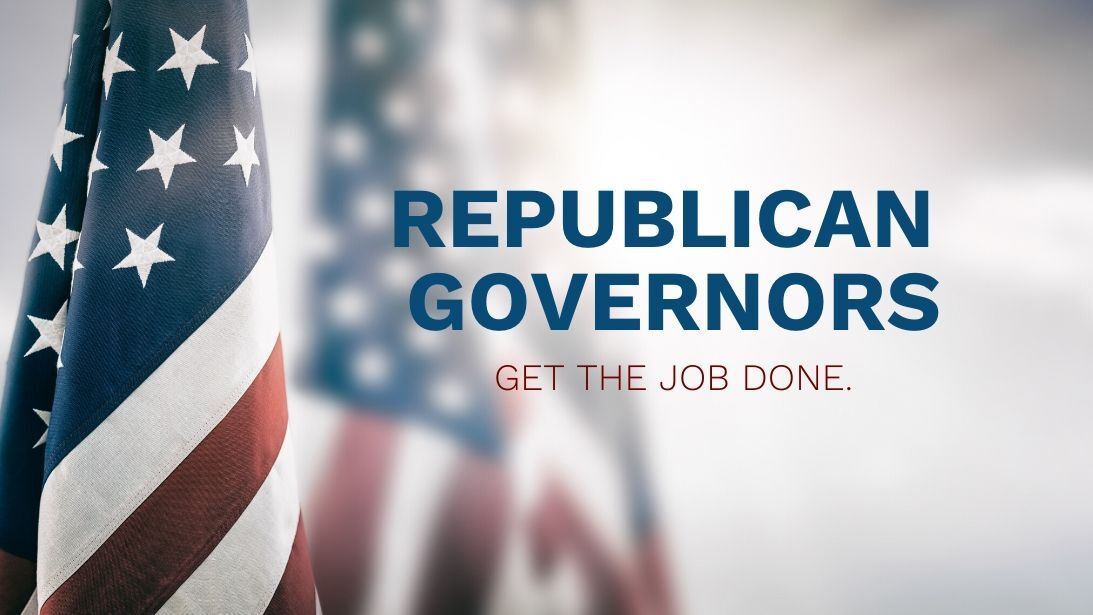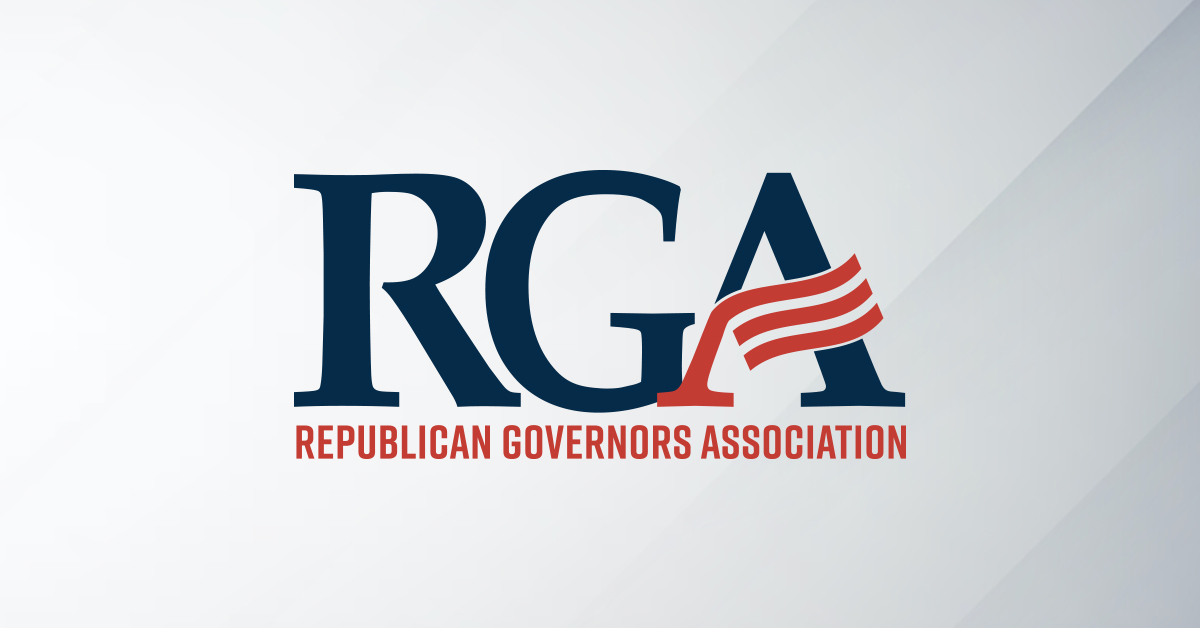
To: Interested Parties
From: Dave Rexrode, Executive Director – Republican Governors Association
Subject: 2020 Election Results
With all 11 gubernatorial races called, it is clear that Republican governors and the Republican Governors Association (RGA) had a very good night.
The RGA re-elected all six of our incumbents who were on the ballot, retained the open Republican gubernatorial seat in Utah, and increased our overall majority by flipping Democratically controlled Montana, a state we that hadn’t won in 20 years. Moreover, we were able to increase our majority to 27 Republicans and 23 Democrats by winning 8 of the 11 races in 2020. The leadership of RGA Chairman Greg Abbott and Vice Chairman Doug Ducey was instrumental in expanding our majority and building a strong foundation for the future.
By winning with record margins in deep blue states like Vermont and New Hampshire, showing strength in suburban communities in Indiana and Missouri, and flipping a long-held Democratic seat in Montana, it is clear Republican governors were able to navigate a challenging environment and offer the party a path forward in future elections. However, we didn’t get here by accident. The quality of our candidates, including the incredible leadership of incumbent governors throughout the COVID-19 crisis, along with the resources and strategic support the RGA was able to deploy, prevented potentially competitive races from ever coming online for the Democrats and gave Republicans a competitive edge in open seats and contested races.
The RGA made smart investments to defend our incumbents in Missouri and New Hampshire, hold the open seat in Utah, and win Montana for the first time in 20 years. By utilizing a newly refined data modeling and targeting program to better focus our resources on the voters who were most likely to be moved by our candidates’ messages, dramatically increasing our digital targeting across many platforms, and refocusing our television and paid media efforts given the challenges and opportunities presented by COVID-19, the RGA was able to create the best ROI possible. In fact, the RGA invested 84% of its political budget into races we won.
In the three biggest gubernatorial races of 2020 (states where the RGA and the DGA each spent more than $1 million in the final weeks of the campaign) Republicans won all of them. In fact, looking at public finance reports, most of the funds the DGA spent politically in 2020 were in races they lost.
One of the most underreported stories of this election cycle is Democrats’ failure to recruit solid candidates in races that could have been more competitive:
- In Indiana, Governor Holcomb built a strong brand grounded in building up Indiana’s workforce and received some of the highest marks for his COVID-19 response in the country. Democrats failed to get their top two recruits on the ballot and were left with Woody Myers, a candidate so weak they had to extend the deadline to choose a running mate because no one wanted to serve on the ticket.
- In West Virginia, Democrats made an all-out effort to recruit Senator Joe Manchin to run, but he opted out of taking on Governor Justice’s strong record on education, infrastructure, and economic growth.
- In North Dakota, Democrats tried and failed to recruit former Senator Heidi Heitkamp to take on innovator and problem solver Doug Burgum.
With 2020 behind us we see several strong opportunities to increase our gubernatorial majority in 2021 and 2022.
All you need to know about how competitive New Jersey is going to be in 2021 (and how worried Phil Murphy is), consider that in the closing weeks of 2020, when the airwaves were cluttered with ads for federal candidates on the ballot this year, Phil Murphy’s team thought it was critical to spend more than $1.25 million on positive ads to support his re-election campaign still over a year away. In fact, DGA Chairman Murphy’s team spent more on his re-election campaign than the DGA spent in New Hampshire. Enough said.
In Virginia, Democrats are faced with what appears to be several bruising primaries, a field of candidates mired in scandal, a legislature that is trying to compete with California and Oregon to see which is the most “woke,” all while trying to replace a weakened Ralph Northam who is still trying to recover from his own scandal.
In 2022, there are several Democratic incumbents who are vulnerable, and we look forward to expanding the map and increasing our majority.
A recap of the top races in 2020:
Vermont:
- Republican Governor Phil Scott was re-elected to a third two-year term and received nearly 69% of the vote which is the highest margin a Vermont gubernatorial candidate has received since Howard Dean was re-elected in 1996 with 70% of the vote.
- Phil Scott was the biggest vote getter in Vermont, outperforming even Joe Biden by 2%, and received a record 248,000 votes.
- The DGA highlighted Vermont as a high priority pick-up opportunity and got their preferred candidate the nomination, Lt. Governor David Zuckerman. Despite the national mood, they once again struggled in Vermont and failed to invest significant resources in the race. Phil Scott was re-elected without his campaign running a single television ad.
New Hampshire:
- Republican Governor Chris Sununu was re-elected to a third two-year term. He received nearly 65% of the vote which was the highest margin a Republican gubernatorial candidate has received in New Hampshire since 1994 when Governor Merrill was elected with 69% of the vote.
- Governor Chris Sununu led the Republican ticket in New Hampshire and had long coattails as he was able to flip the State House, State Senate, and the Executive Council all while getting nearly 75,000 more votes than Joe Biden.
- The DGA repeatedly highlighted New Hampshire as a top priority for them to flip. They invested over $1 million into the race and came up short, again. However, the $1 million they spent is far less than what DGA Chairman Phil Murphy’s team spent in New Jersey during the final weeks of 2020 on his own re-election campaign, which isn’t up until next year. New Hampshire was an utter failure for the DGA.
Missouri:
- Heading into 2020, Governor Mike Parson was facing a tough election battle. He wasn’t elected to the office and only became Governor when the previous occupant resigned in the midst of a major scandal. Democrats had controlled the Governor’s Mansion in Missouri for 20 of the last 28 years, and regaining control was the top priority for the DGA and their allies.
- They recruited a “rising star” candidate, State Auditor Nicole Galloway, to challenge Governor Parson, and she was given every opportunity to shine on the national stage. During the height of the COVID-19 pandemic, when Governor Parson suspended his campaign and fundraising efforts for four months to focus solely on leading the state through the pandemic, Nicole Galloway and the DGA spent their time launching partisan attacks, raising record amounts of resources, and hosting Zoom cocktail parties.
- Despite the DGA and liberal allies investing millions into the state (more than they did in 2016) and focusing almost all of their national firepower on Governor Parson, he became the first incumbent Republican governor since 1984 to win another term.
Montana:
- Montana was the biggest gubernatorial prize in 2020. Republicans last won the office 20 years ago and faced term-limited Governor Steve Bullock’s hand-picked successor, Lt. Governor Mike Cooney.
- The DGA and their allies went all-in to maintain power, outspending Republicans by over $1 million on TV alone. The Cooney campaign and the DGA were so focused on winning they violated campaign finance laws not once, but twice, and were found guilty of inappropriate coordination. They even resorted to dirty tricks like exploiting a New Jersey charity to falsely drive a narrative against Greg Gianforte. Make no mistake, this was the DGA’s top priority, and they failed.
- The RGA invested more than $10 million to support Greg Gianforte, including TV, radio, digital, direct mail, and text/mobile efforts using a newly refined modeling program that allowed us to more effectively communicate with voters. Montana was the top gubernatorial contest in 2020, and Republicans delivered a decisive victory, adding to our majority.
North Carolina:
- Roy Cooper spent a record $25 million on television, much of which was raised during the height of the pandemic. Unlike every other governor who was running for re-election in 2020, Roy Cooper did not pause his campaign’s fundraising operations and continued to engage in political activity for months while he shut down the state. He was able to use that to his advantage, outspending Dan Forest 7 to 1 on TV. Cooper needed his massive fundraising advantage and a significant investment from the DGA to cling to a small victory.
Conclusion:
The biggest takeaway from 2020 is that Republican governors were able to be successful in a challenging environment because voters recognized not only their ability to lead in trying times, but also deliver results for the people in their states. Their example is a roadmap for Republicans moving forward. With gridlock in Washington, Republican governors are going to be the ones getting Americans back to work and rebuilding our economy. Americans are going to be looking to Republican governors to lead and deliver results, and that is exactly what they are prepared to do. Heading into the 2021 and 2022 elections, Republicans are well positioned to make additional gains, increase our majority, and deliver for the American people.
Click here to download a PDF version of this memo.





See the latest videos from RGA
Watch our videosNEW from @GovernorKayIvey: “The CHOOSE Act is putting Alabama parents in the driver’s seat of their child’s education.
I believe it will be one of the most successful school choice programs in the country.”
https://aldailynews.com/ivey-the-choose-act-alabamas-education-savings-account-program-puts-parents-in-the-drivers-seat/
Welcome to a state led by common sense!
@iamwesmoore loses to @GovernorVA again.
What a day for Virginia! @HUDgov is relocating its headquarters to the Commonwealth, bringing over 2,700 employees to its new home in Alexandria.
Thank you @SecretaryTurner for your trust and leadership. We’re proud to welcome HUD to the best state in America to live, work, and https://t.co/DLvdgqy8hY
Follow RGA on Twitter
Follow RGA on Facebook